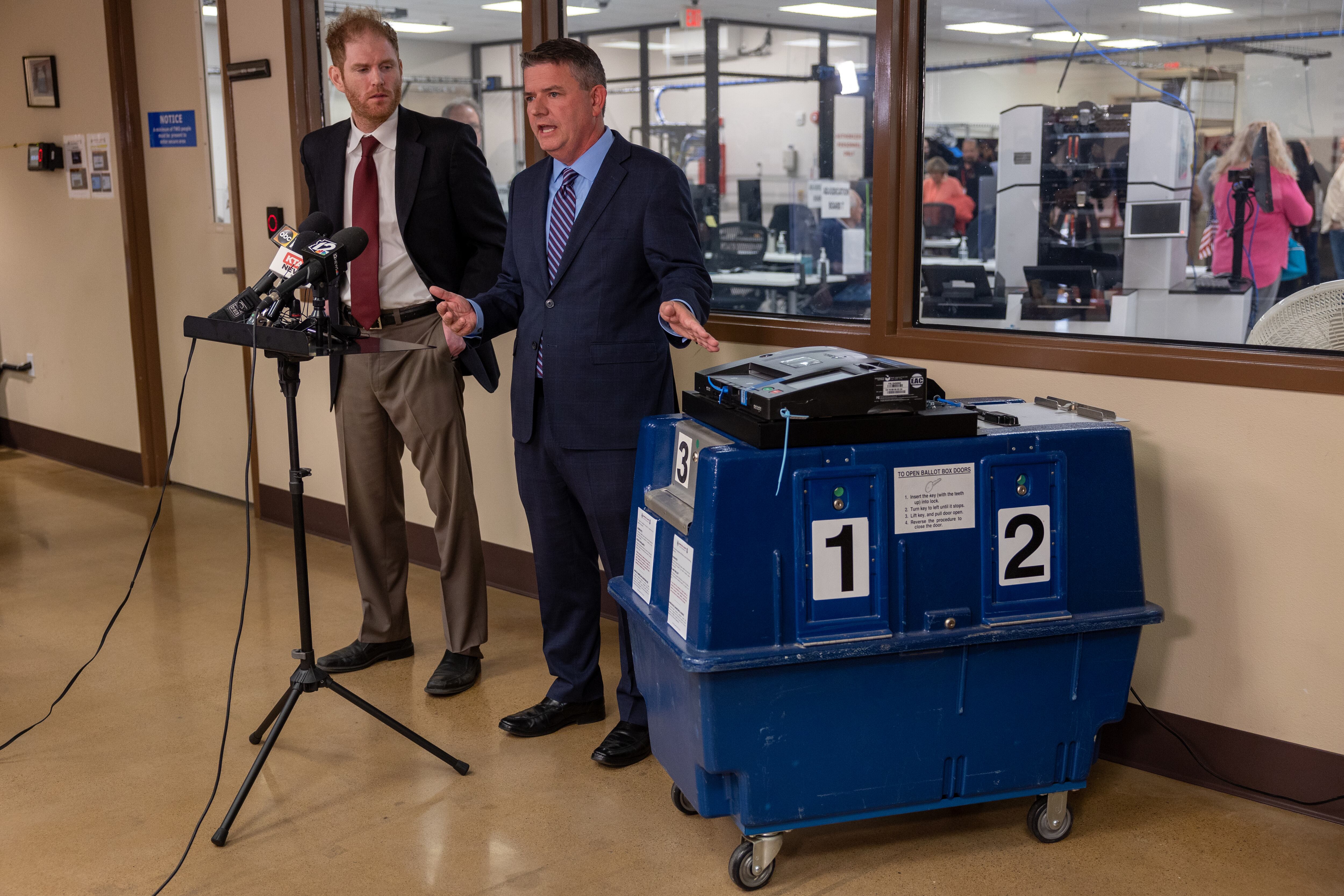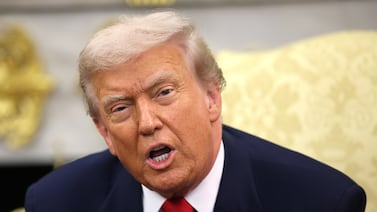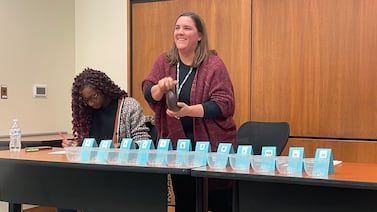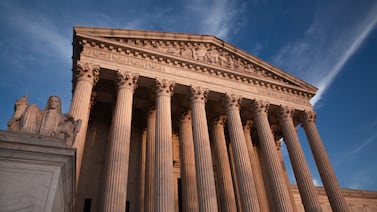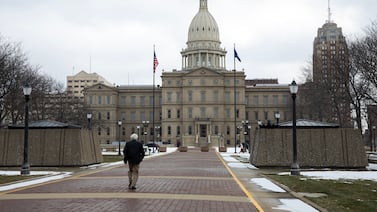Roughly 17,000 Maricopa County voters on Tuesday, about 7% of all in-person voters, were unable to watch machines tabulate their ballots on-site because of a widespread printing problem that caused the on-site machines to reject the ballots, according to Maricopa County officials.
Officials have reassured those voters that their ballots will be counted, one way or another. But it remains to be seen whether the vote-counting machines at the county’s central elections center will be able to tabulate the ballots, whether a bipartisan team of board workers will need to copy the voters’ selections to another ballot, or a mix of both.
The ballots were going through “quality assurance” Wednesday morning to see whether the machines will read them, according to County Supervisors Chairman Bill Gates. County officials have said they will be counted today and will give an update on how later.
These ballots are among the approximately 400,000 remaining ballots Maricopa County has to count.The county has already reported results from 1.2 million ballots. It expects to have 95% to 99% of all ballots counted by Friday.
The level of angst over how the ballots that were rejected on-site will be counted has escalated since the problems — which eventually affected nearly one-third of vote centers — began early on Election Day. Republican leaders had for months been urging voters to cast their ballots in person on Election Day, telling them that was the most secure way to vote. When problems began, some leading Republicans insinuated fraud or malfeasance was to blame and claimed that Republican voters were being disenfranchised. That caused worry to spread.
County Assessor Eddie Cook stopped by a vote center that was having issues in the morning. There, he said he saw frustrated voters and poll workers doing their best to help. Voters told him that they wanted to see the number on the machine go up when they inserted their ballot, to verify that it had been counted.
“Voters really wanted to see the ballot counted,” he said.
When the machine wouldn’t take the ballot, voters were told to place their ballots into a slot on a secure box at each location, which the county has labeled with a “3” sticker and refers to as door number three. There are two other doors on the vote-counting machine, labeled “1” and “2.” A bipartisan team of poll workers at each location then brought those boxes, along with results and already counted ballots, to the county’s central elections center. Prominent Republicans, though, began to warn without basis that this process was somehow unsecure, despite election officials’ promises.
Maricopa County Elections Director Scott Jarrett was confident Tuesday that the vote-counting machines at the central elections center, which tabulate votes in a different way than the on-site machines, would be able to tabulate the ballots, Fields Moseley, the county’s communications director, said Tuesday.
Jarrett is confident, Moseley said Tuesday, because the county did not see any issues tabulating ballots during early voting. During early voting, the county uses the vote-counting machines at its central elections center, not on-site machines at vote centers, to tabulate all ballots.
The same printers and printer settings were used during early voting and on Election Day. That signals to county officials that the central elections center machines will be able to tabulate the ballots.
There may be a possibility, though, that these ballots were being rejected and the county didn’t spot the trend before Election Day. There were only 30,000 in-person ballots cast during early voting — a sliver of the 840,000 or so ballots that the county had tabulated by Election Day.
When Gates was asked at a news conference Wednesday morning how the ballots would be counted, he sounded less certain, simply saying the review process was underway.
By Tuesday afternoon, the county had figured out the printer settings were set incorrectly at the polling places having problems and the timing marks on the ballot — the black lines on the sides that tell the machine where the contests are located so the machine can tally the votes — were printing too light for the machine to read.
County officials have not said how the printers were set up incorrectly, and said they do not know why the problem did not occur during the primary election.
The county tests each ballot printer and each vote-counting machine before the election, county spokesperson Megan Gilbertson said. Test ballots are printed using each printer, and multiple test ballots are run through each vote-counting machine, she said.
Jen Fifield is a reporter for Votebeat based in Arizona. Contact Jen at jfifield@votebeat.org.

